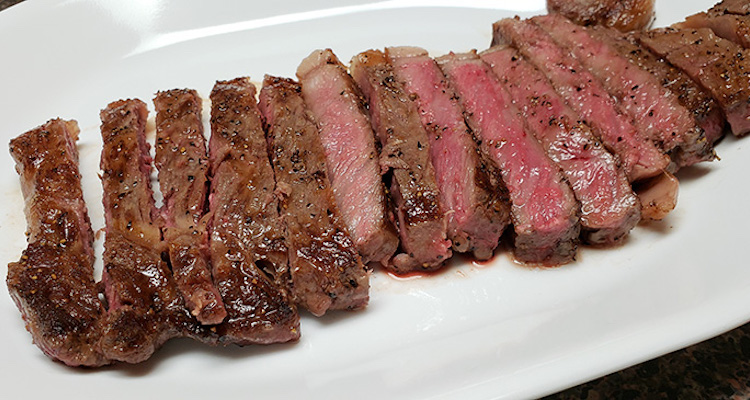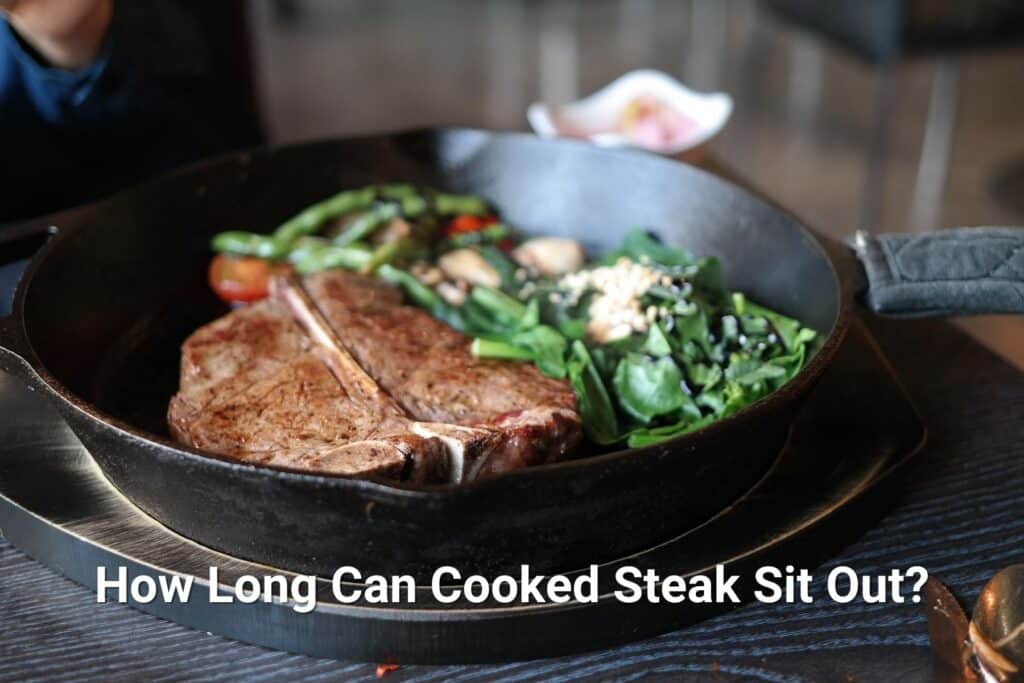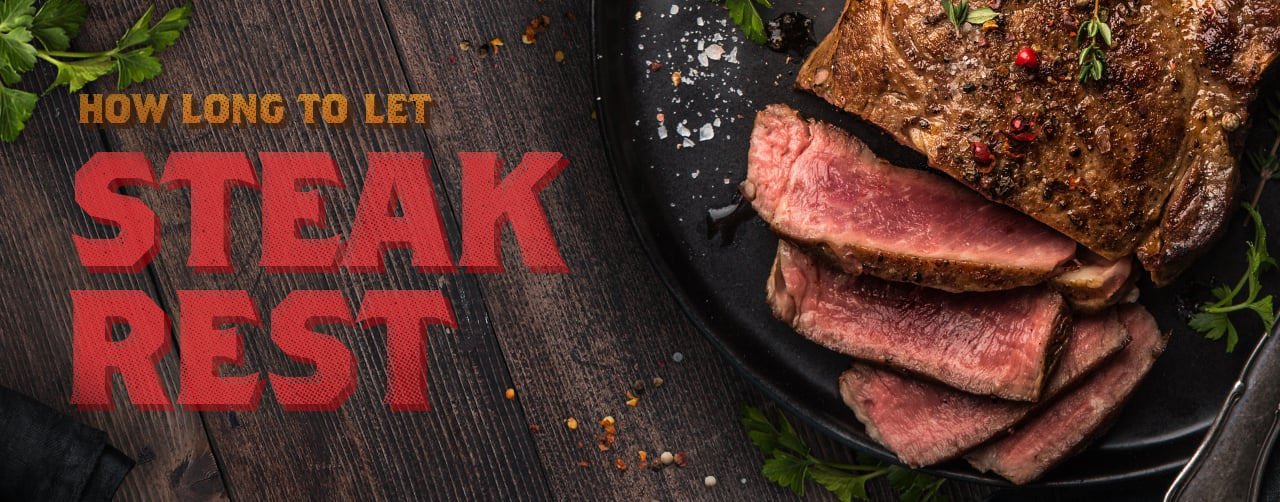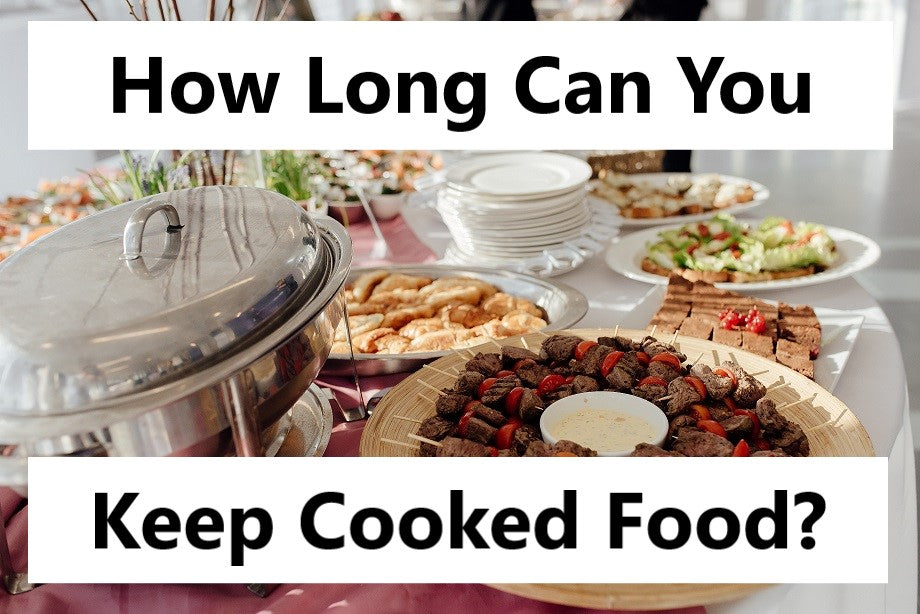Understanding Food Safety Of Cooked Steak

The safety of cooked steak is of utmost importance to ensure that consumers are protected from foodborne illnesses. Cooked steak can become a breeding ground for bacteria if not handled properly. It is essential to handle cooked steak safely by following proper practices such as using separate utensils and cutting boards for raw and cooked meat or vegetables to prevent cross-contamination. Additionally, cooking steak at the right time before the meal and storing it properly afterwards can help maintain its quality and reduce the risk of contamination. By understanding food safety guidelines for cooked steak, individuals can enjoy a delicious and safe meal.
The Importance Of Handling Cooked Steak Safely
To ensure the safety and quality of cooked steak, it is crucial to handle it properly. Mishandling cooked steak can lead to bacterial growth and increase the risk of foodborne illnesses. By following safe food-handling practices, such as using separate utensils and cutting boards for raw and cooked meat, individuals can prevent cross-contamination. Properly cooking steak to the recommended temperature and storing it at the correct temperature afterward is also essential. By prioritizing food safety, individuals can protect themselves and their loved ones from potential health risks associated with consuming improperly handled cooked steak.
Factors Affecting The Shelf Life Of Cooked Steak
There are several factors that can affect the shelf life of cooked steak. One important factor is the handling and storage of the steak. If it is not stored properly, such as being left out at room temperature for too long, it can promote bacterial growth and spoilage. Additionally, the quality and freshness of the steak when it was cooked can also impact its shelf life. If the steak was not fresh or if it was cooked to a lower temperature, it may have a shorter shelf life. It is important to handle and store cooked steak properly to ensure its safety and quality.
How Long Can Cooked Steak Sit Out

Cooked steak should not be left out at room temperature for more than two hours to ensure food safety. After this time, the risk of bacterial growth increases significantly, especially within the temperature danger zone of 40-140 degrees Fahrenheit. To prevent bacterial contamination, it is recommended to refrigerate cooked steak within two hours of cooking. This reduces the risk of foodborne illnesses and maintains the quality of the meat. Proper storage in the refrigerator can extend the shelf life of cooked steak and keep it safe to consume.
Duration Cooked Steak Can Sit Out At Room Temperature
Cooked steak should not be left out at room temperature for more than two hours to ensure food safety. After this time, the risk of bacterial growth increases significantly, especially within the temperature danger zone of 40-140 degrees Fahrenheit. To prevent bacterial contamination, it is recommended to refrigerate cooked steak within two hours of cooking. This reduces the risk of foodborne illnesses and maintains the quality of the meat. Proper storage in the refrigerator can extend the shelf life of cooked steak and keep it safe to consume .
Proper Storage Recommendations For Leftover Cooked Steak
After enjoying a delicious steak meal, it is important to properly store any leftover cooked steak to maintain its food safety and quality. To ensure maximum freshness, it is recommended to refrigerate the leftover cooked steak within two hours of cooking. Place it in an airtight container or wrap it tightly in foil or plastic wrap before refrigerating. Label the container with the date to keep track of its shelf life. Leftover cooked steak can be stored in the refrigerator for up to three to four days. If you want to extend its shelf life further, freezing is an option. Simply place the tightly wrapped steak in a freezer bag or container and it can be stored in the freezer for up to three to four months. When you are ready to enjoy it again, thaw the frozen steak in the refrigerator before reheating. Taking these storage recommendations into consideration will help maintain the quality and safety of your leftover cooked steak.
Signs Of Spoiled Cooked Steak

Signs of spoiled cooked steak can include an off smell, unusual colors, or the presence of mold. If the cooked steak emits a strong, unpleasant odor or has a slimy texture, it is likely spoiled and should be discarded. Discoloration, such as the presence of green or blue spots, can also indicate spoilage. Mold growth on the steak is a clear sign of bacterial contamination and should not be consumed. It is important to closely inspect cooked steak for these signs to ensure food safety and avoid consuming spoiled meat.
Identifying Indicators Of Spoiled Cooked Steak
To determine if cooked steak has spoiled, there are specific indicators to look out for. One key sign is an off smell, where the steak emits a strong, unpleasant odor. Another indicator is a change in color, such as the presence of green or blue spots, which can indicate spoilage. Mold growth on the steak is a clear sign of bacterial contamination and should not be consumed. Additionally, if the cooked steak has a slimy texture, it is likely spoiled and should be discarded. It is important to closely inspect cooked steak for these signs to ensure food safety and avoid consuming spoiled meat.
Risks Associated With Consuming Spoiled Steak
Consuming spoiled steak can pose several risks to one’s health. Spoiled steak may contain harmful bacteria such as Salmonella, E. coli, or Listeria, which can cause food poisoning. These bacteria can lead to symptoms like nausea, vomiting, diarrhea, abdominal pain, and fever. In severe cases, food poisoning can result in dehydration and require medical attention. Additionally, consuming moldy or contaminated steak can cause allergic reactions or lead to other health complications. To ensure food safety and avoid these risks, it is essential to properly store, handle, and consume cooked steak within recommended timeframes.
Maintaining Food Quality Of Cooked Steak

Properly maintaining the quality of cooked steak is crucial for an enjoyable dining experience. To preserve the flavor and texture, it is essential to follow a few tips. Firstly, ensure that the cooked steak is stored in an airtight container or wrapped tightly in foil to prevent it from drying out. Secondly, refrigerate the steak promptly, ideally within two hours after cooking, to slow down bacterial growth. Lastly, when reheating cooked steak, do it gently and avoid overcooking to retain its tenderness and juiciness. By following these guidelines, you can enjoy a delicious and high-quality steak even after it has been cooked.
Tips For Preserving The Flavor And Texture Of Cooked Steak
To preserve the flavor and texture of cooked steak, there are a few key tips to keep in mind. Firstly, it is essential to store the cooked steak in an airtight container or wrap it tightly in foil to prevent it from drying out. This will help retain its juiciness and tenderness. Secondly, refrigerate the steak promptly, ideally within two hours after cooking, to slow down bacterial growth. Lastly, when reheating cooked steak, it is important to do so gently and avoid overcooking, as this can lead to a loss of tenderness and moisture. By following these tips, you can ensure that your cooked steak maintains its high quality and delicious taste.
Proper Methods For Reheating Cooked Steak
Properly reheating cooked steak is essential to maintain its flavor and texture. The best method is to use a low, gentle heat to prevent overcooking and drying out the steak. Here are a few recommended methods for reheating cooked steak:
- Oven: Preheat the oven to a low temperature (around 250°F). Place the steak on a baking sheet and cover it loosely with foil. Heat for about 10-15 minutes, or until the steak reaches the desired temperature.
- Stovetop: Heat a skillet over medium heat and add a small amount of oil or butter. Place the steak in the skillet and cook for a few minutes on each side until heated through.
- Microwave: While not the ideal method, the microwave can be used for quick reheating. Place the steak on a microwave-safe plate and cover it with a microwave-safe lid or microwave-safe plastic wrap. Heat in short intervals, checking and flipping the steak frequently to prevent overcooking.
By using these proper reheating methods, you can enjoy a delicious and tender steak that retains its original flavor and texture.
Food Safety Guidelines For Cooked Steak

When it comes to ensuring the safety of cooked steak, there are a few important guidelines to follow. Firstly, cooked steak should not be left at room temperature for more than two hours. After this time, it enters the Temperature Danger Zone where bacteria can grow rapidly. It is crucial to store leftover cooked steak in the refrigerator within this timeframe. Additionally, it is recommended to consume leftover cooked steak within 3-4 days to maintain its quality and safety. By following these food safety guidelines, you can enjoy cooked steak without compromising your health.
Recommended Storage Durations For Cooked Steak
After cooking steak, it is important to store it properly to maintain its quality and ensure food safety. The recommended storage duration for cooked steak is 3-4 days in the refrigerator. Beyond this time, the quality of the steak may start to deteriorate. It is crucial to consume leftover cooked steak within this timeframe to minimize the risk of bacterial growth and potential foodborne illnesses. By following these guidelines, you can enjoy the delicious taste of cooked steak while prioritizing your health and safety.
Best Practices For Handling And Storing Leftovers
Proper handling and storage of leftovers is essential to ensure food safety and maintain quality. Here are some best practices to follow:
- Store leftovers promptly: Refrigerate or freeze leftover cooked steak within 2 hours of cooking to prevent bacterial growth.
- Use airtight containers: Transfer the cooled steak into airtight containers or wrap it tightly in plastic wrap or foil to prevent exposure to air and moisture.
- Label and date: Clearly label the containers with the date of storage to keep track of how long the leftovers have been stored.
- Store in the right temperature: Keep leftovers in the refrigerator at a temperature below 40°F (4°C) or freeze them at 0°F (-18°C) to maintain their quality.
- Reheat properly: When reheating leftover steak, make sure to heat it to an internal temperature of 165°F (74°C) to kill any bacteria.
By following these best practices, you can ensure the safety and quality of your leftover cooked steak.
Conclusion

In conclusion, ensuring the safety and quality of cooked steak is crucial for preventing foodborne illnesses. It is important to handle and store leftovers properly to minimize the growth of bacteria and maintain the flavor and texture of the steak. By promptly refrigerating or freezing leftovers, using airtight containers, and reheating them to the recommended temperature, individuals can enjoy leftover cooked steak safely. Remember to follow the recommended storage durations and discard any spoiled steak. By implementing these food safety practices, individuals can protect themselves and their families from potential health risks.
Summary Of Food Safety Practices For Cooked Steak
To ensure the safety and quality of cooked steak, it is important to follow certain food safety practices. These include promptly refrigerating leftovers and not leaving cooked steak out at room temperature for longer than two hours. It is recommended to store leftovers in airtight containers and discard any spoiled steak. Proper reheating methods should be used, and it is essential to adhere to recommended storage durations. By implementing these practices, individuals can protect themselves and their families from the risks of consuming spoiled or contaminated steak.
Benefits Of Proper Food Handling And Storage
Proper food handling and storage practices offer numerous benefits, including enhanced food safety and preservation of food quality. By following these practices, individuals can minimize the risk of foodborne illnesses caused by bacteria and other pathogens. Proper handling and storage also help to maintain the flavor, texture, and nutritional value of cooked steak, preventing it from becoming spoiled or contaminated. Additionally, these practices reduce food waste by extending the shelf life of cooked steak, allowing it to be consumed at a later time. Overall, prioritizing proper food handling and storage ensures a safe and enjoyable dining experience.
FAQ About How Long Can Cooked Steak Sit Out: Ensuring Food Safety And Quality
Q: How long can cooked steak sit out at room temperature?
A: Cooked steak should not be left out at room temperature for more than two hours. If the temperature is above 90°F (32°C), then it shouldn’t be left out for more than one hour.
Q: Can cooked steak be left out overnight?
A: It is not safe to leave cooked steak out overnight. Bacteria can multiply rapidly at room temperature, increasing the risk of foodborne illnesses.
Q: What should I do if I accidentally left cooked steak out too long?
A: If cooked steak has been left out for more than the recommended time, it is best to discard it to prevent the risk of food poisoning.
Q: Can cooked steak be reheated after being left out?
A: It is not recommended to reheat cooked steak that has been left out at room temperature for an extended period. It is safer to err on the side of caution and discard it.
Q: How can I ensure the safety and quality of cooked steak?
A: To ensure the safety and quality of cooked steak, always refrigerate leftovers promptly, store them in airtight containers, and reheat them to an internal temperature of 165°F (74°C) before consuming.

Johnny Knuckles Knock-out BBQ is a culinary haven for barbecue enthusiasts, offering a fusion of traditional BBQ and tantalizing street fare. Our secret to delivering mouthwatering dishes lies in our meticulous preparation process. Each cut of meat is lovingly hand-rubbed and slow-smoked over 100% hardwood, creating a symphony of flavors that will leave your taste buds dancing. Whether planning a special event or simply craving an unforgettable meal, Johnny Knuckles Knock-out BBQ is here to elevate your dining experience. Our catering services are designed to bring the sizzle and aroma of our delectable BBQ to your event, ensuring that every guest leaves with a full belly and a smile.